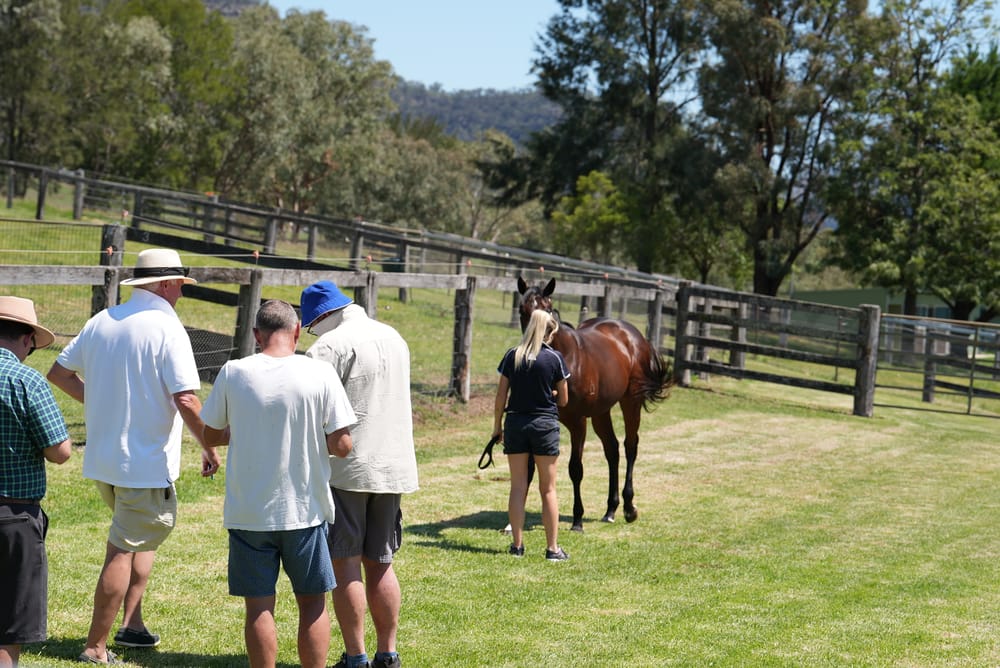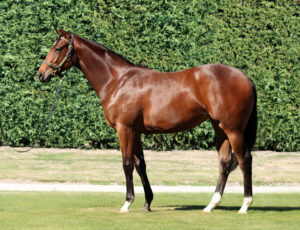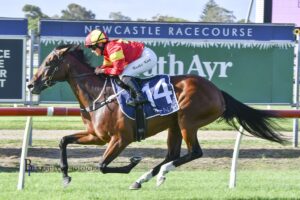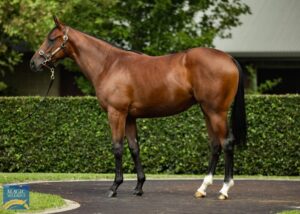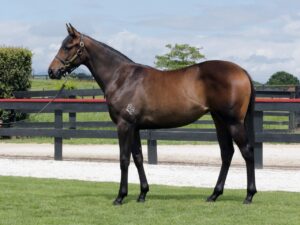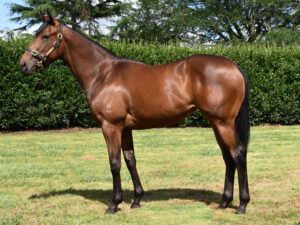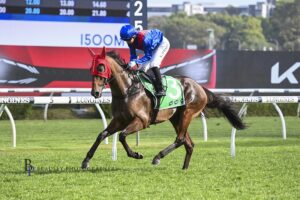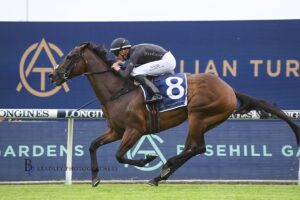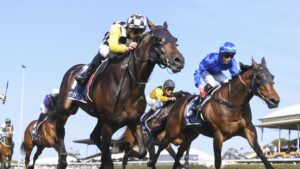By Jessica Owers – December 22, 2023
Chris ‘Doc’ Lawler leaves nothing to chance in his quest to find a fast racehorse.
From January 9, Magic Millions will commence selling on its biggest-ever catalogue of yearlings, with 1468 horses scheduled across seven days.
In any given year, this number would be slashed by withdrawals, but this time, with only three weeks to the sale, withdrawals have been minimal; just four horses are officially out at the time of writing.
It makes for a bumper schedule next month, with Book 1 already at record proportions. But it also makes for a challenging schedule as buyers scramble to view all horses ahead of their selling in the sale ring.
Enter Chris ‘Doc’ Lawler, veterinary leviathan and yearling circuit veteran. Lawler has been involved with horse racing for decades, both in a career capacity and as a hobby owner, and among his greatest hits are Tarzino, who won the Victoria Derby, and his homebred Queensland Oaks winner Gypsy Goddess.
For the past 15 years, Lawler has organised and executed private farm tours each December ahead of the Gold Coast Yearling Sale. The idea is that he and his cohorts make private visits to almost all of the major vendors sending a draft to Magic Millions.
By the first week of January, when each of them arrives at the complex, they will have laid eyes on – and made notes about – the vast majority of catalogued horses.
“We’ll probably have seen 1000 horses by the time we arrive at the Gold Coast,” Lawler says.
Lawler’s tour covers the Hunter Valley, Southern Tablelands and Southern Highlands districts of NSW, then the southeast region of Queensland. It covers every major vendor in those areas.
The tour consists of less than a dozen old friends, including the training likes of Peter Moody, Mick Price, John Sargent, Phil Stokes and John O’Shea. This year, O’Shea sent his training partner Tom Charlton in his place, while Stokes sent his son, Tommy Stokes.
Other regulars include bloodstock agents Neil Jenkinson, Rick Connolly and father-son powerhouse Bill and James Mitchell of Mitchell Bloodstock. Syndicator James Moss, of Tricolours Racing, goes along, as did fellow syndicator Wylie Dalziel this year, trainer Richard Freedman, and Segenhoe Stud’s general manager Peter O’Brien.
“As Paul Roos once said when he was coach of the Sydney Swans, we try to have a ‘no dickhead’ policy,” Lawler says.
“If there’s a debutant on the tour and they rub up some people the wrong way, they may not get a guernsey the next year.”
The group is professional horsemen, be it trainers, bloodstock agents or syndicators.
“If there’s a debutant on the tour and they rub up some people the wrong way, they may not get a guernsey the next year.” – Chris Lawler
Each attends the tour with his own agenda, confessing little about his observations and keeping his cards close to his chest.
The men don’t share notes, and nor is Lawler there as a veterinarian. That part of his job will only kick in at the sales complex when he is commissioned to view X-rays and scopes, or assess a particular yearling on conformation or physicality.
“There’s a lot of jovial banter on these tours and there’s a lot of ribbing that goes on,” Lawler says.
“But as far as the tourers are considered, they’re there to do what they do and I’m there to do what I do, and veterinary expertise doesn’t come into it.
“They’re there to try and buy themselves a fast horse. They know what they like and they’re all very experienced, and if there’s any veterinary involvement, that’s only going to come at the sale when they might ask me to do the homework on a particular horse.”
Organising the tour is an annual headache for Lawler. It isn’t easy lining up dozens of farms end-to-end in four different regions of two different states.
Lawler restricts each yearling viewing to two minutes, meaning an average draft of 30 horses will demand an hour of their time, give or take the efficiency of the farm’s staff and other variable factors.
“We’ve got it down to military-like precision,” Lawler says. “Each horse is brought out for two minutes, and it will be stood in front of us, walked away from us, walked lateral to us and walked towards us.
Preview in new tab“People can notice things like overstep of stride, depth of girth, length of hip, size of nostril, mandibular width and all those physical preferences they might have.
“They’ll take their little notes and if someone wants to spend longer with a particular horse, they’ll just step forward and ask.”
The tour means that by the time Lawler’s group gets to the Gold Coast in early January, it will have detailed scribblings on the bulk of the catalogue. Lawler never lets the group size become too large and, for the January sale, it usually follows the same itinerary each year.
The tour kicks off in the Denman surrounds, then heads to the Widden Valley. The following day it’s the Segenhoe Valley, followed by the Murrurundi districts before heading west of Scone.
The Southern Tablelands are next where Twin Hills, Bowness Stud and Newhaven Park are located, and then it’s on to the Southern Highlands. The Darling Downs always wraps things up, which gives the group about a week’s grace before Christmas.
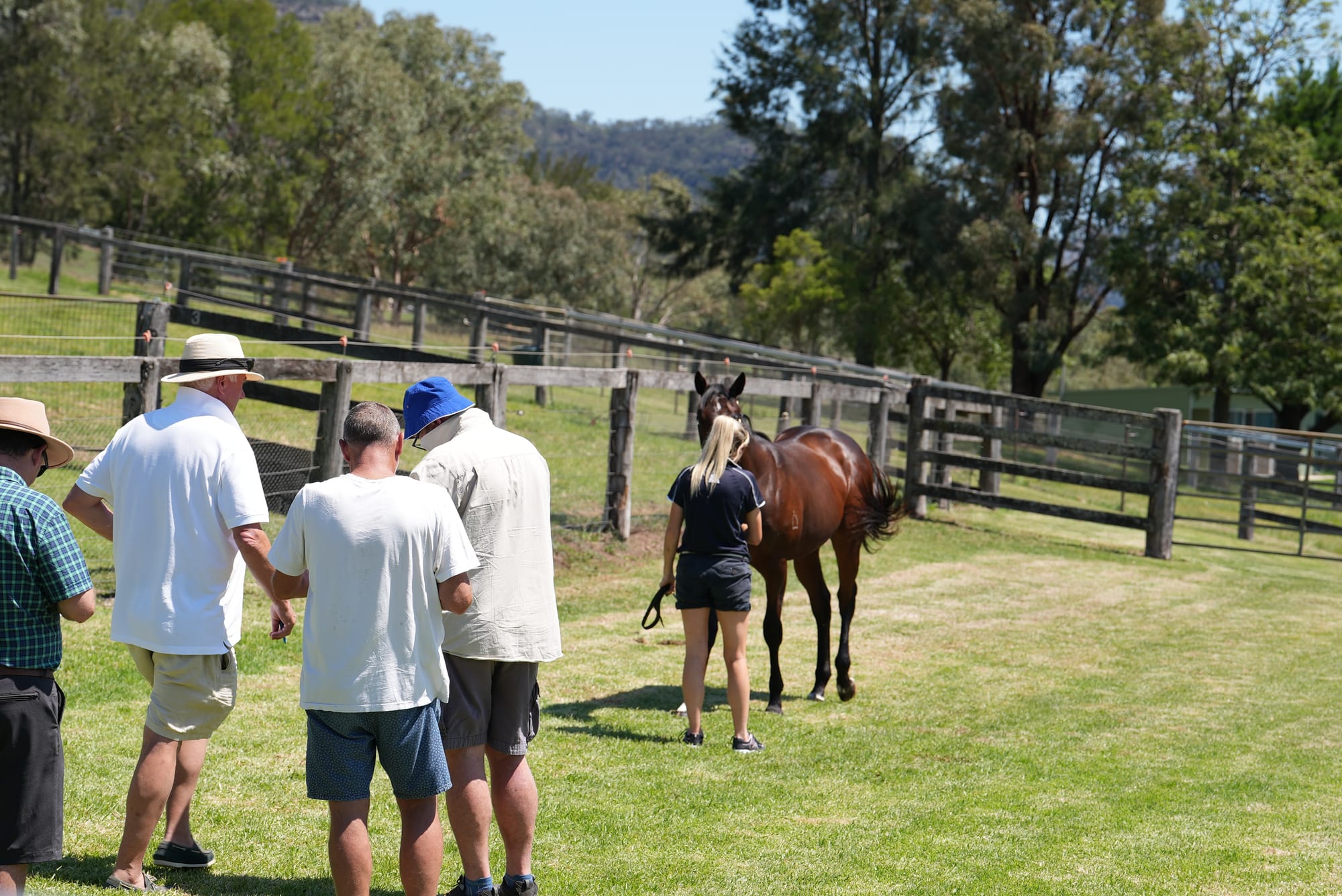
“We’ll still need to see 200 or so in the first session (Book 1),” Lawler says. “If we’re organised enough, we can usually see the remainder of the second-session horses before they start selling.”
This year, the size of the catalogue is on everyone’s mind.
Book 1 will feature 1020 horses (excluding withdrawals) when the equivalent figure last year was 979. In 2022 it was 933.
However, the rate of withdrawals has been incredibly low this year, and while that’s good news for the health of the catalogue, it’s also a significant mountain to climb for buyers, who will find it difficult to view all the horses on their shortlists at the complex.
“It’s without doubt the biggest sale of the year volume-wise,” Lawler says.
“Everyone was a little stunned when the catalogue came out as to its general size.
“But I’m told by the powers that be that they didn’t send out any more acceptances than they would normally send out.
“It’s just that they haven’t had the withdrawals they would normally get, and I think that’s likely based on people’s interpretations of what the economy is going to do in the next six months.”
Lawler alludes to the performances of the 2023 Australian yearling sales.
Generally speaking, the January sale outgunned most other sales on metrics because it was the first bite of the cherry. As the year went on, sales found it hard to keep up the momentum.
“We noticed during the year, with a continual rise in interest rates, that some of the metrics at the other sales didn’t hold up as well as January,” Lawler says.
“I think breeders this year are keen to get in to try to get their money early, and that’s why we’ve ended up with as large a catalogue as we have.”
This presents its own challenges.
“I think breeders this year are keen to get in to try to get their money early, and that’s why we’ve ended up with as large a catalogue as we have.” – Chris Lawler
For example, how do trainers find the time to view all these yearlings, and how does Magic Millions ensure enough inspection time at the complex? It doesn’t benefit anyone if yearlings aren’t getting seen.
“That’s why we go to see them on farms,” Lawler says. “People involved in the industry, in particular trainers, are very time poor, and with such a large catalogue, and the fact that the sales complex cannot house all those horses at the one time, it leaves people without enough time to assess each horse that has been catalogued.
“Assessing the horses at the farm prior to arrival has become an essential tool, and there are more and more people doing them each year.”
Gai Waterhouse’s annual tour has become a social media hit each year as she drops in and out of farms by helicopter. Magic Millions also conducts its own tours.
However, according to Lawler, farm tours had their modern genesis in New Zealand, when studs invited locals and Australians to view a handful of yearlings, followed by a generous hospitality spread.
It soon became clear though that time was of the essence; these were buyers who wanted to see horses, not food and drink.
“Some trainers, while they enjoyed the hospitality, saw it as an inefficient use of their time,” Lawler says.
“So they organised ‘rebel tours’, for want of a better term, where they asked to see the whole draft, thank you very much, and not just six or 10 horses.”
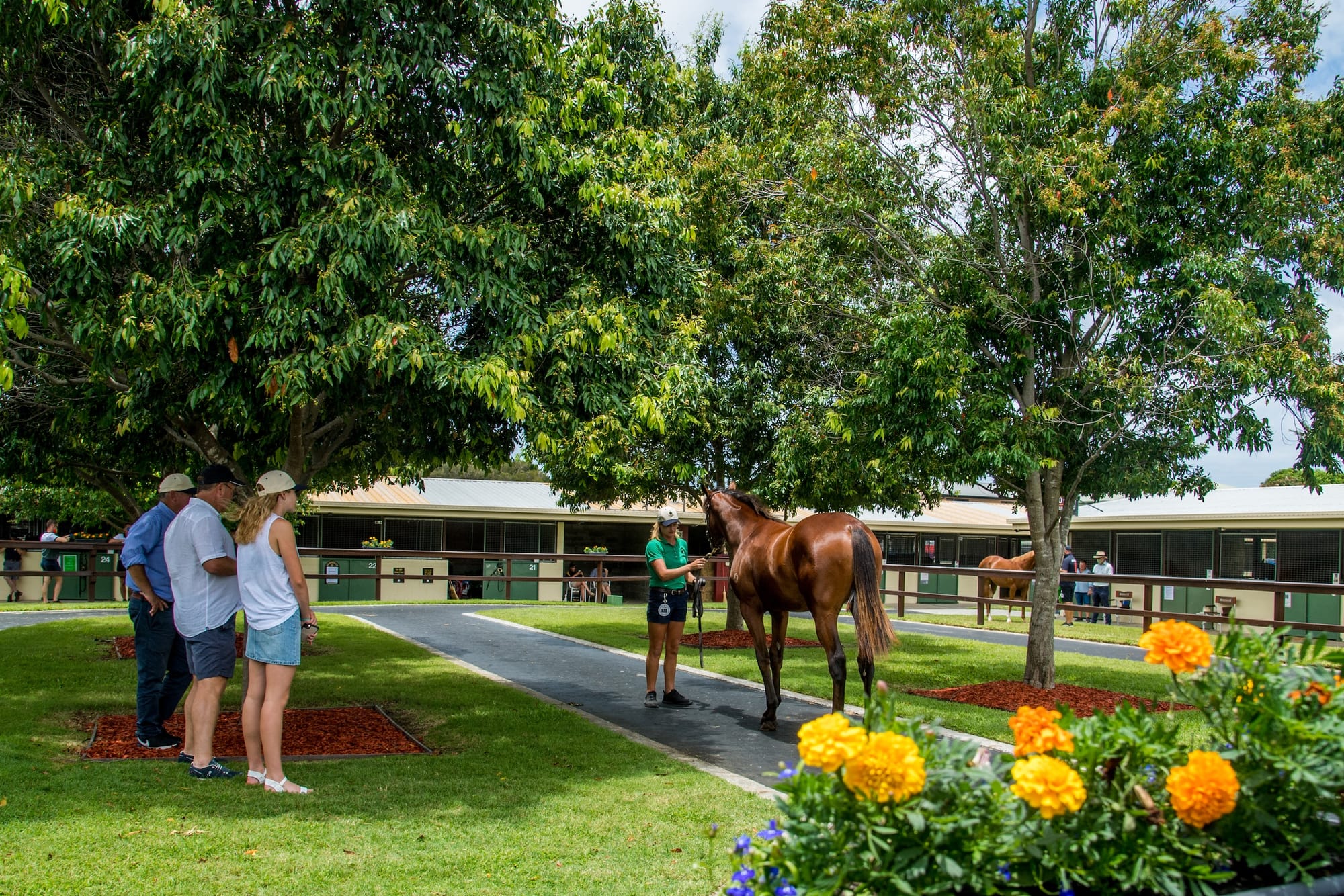
At next month’s sale, Magic Millions has taken into account the enormity of its catalogue. Where usually Book 2 starts trading on the Sunday following the feature raceday on Saturday, this time it will begin Book 2 on the Monday.
This day’s grace will be a lifeline for the second session as it provides an extra day for vendors to get yearlings in front of buyers.
“I think the one thing of concern here is buyer fatigue,” Lawler says. “A solid day’s inspection will start at 8am until vendors are starting to close up, and if you get through 150 to 200 horses, that’s a very big day.
“If you’ve got five days of that through the first week of January, and you can devote all your time to it, you can probably get through 1000 horses on site, but how you would then get through the other 460 that are in Book 2 is questionable.
“In other words, if you have not been out to the farms to have a look at them, you will not get through every horse that is catalogued.”
On-farm inspections in Australia have been occurring for a long time.
As far back as the turn into the 1900s, turf journalists would take long overland trips by train and buggy to the Widden Valley and beyond, writing long reports for the newspapers about what yearlings to expect in Sydney at Easter.
These days, farm inspections are not about the media, but the message seems to be the same.

